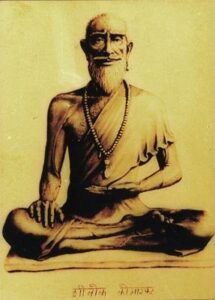367 total views, 2 views today
The Ancient Healing Art OF THAI MASSAGE :- BY Expert From The Leisure Spa
DISCOVER THE ORIGINS AND BENEFITS OF TRADITIONAL THAI MASSAGE, ROOTED IN INDIAN YOGA PHILOSOPHY. EXPERIENCE THE HEALING POWERS OF ACUPRESSURE POINTS AND ENERGY LINES TO PROMOTE PHYSICAL AND MENTAL WELL-BEING.
INTRODUCTION:
Thai massage is a traditional healing practice that has been in use for over 2,500 years. Its roots can be traced back to India, where a physician named Jivaka Kumar Bhaccha, a student of Buddha, practiced the art of massage. Thai massage made its way to Thailand via Buddhist monks who traveled from India, and it has been an integral part of Thai medicine ever since. In this blog post, we will delve deeper into the history, principles, benefits, and techniques of Thai massage.
History Of Thai Massage:
Thai massage is an ancient healing practice that has been passed down through generations of Thai healers. The founder of Thai massage, Jivaka Kumar Bhaccha, was a physician and a close confidant of the Buddha. He is believed to have developed Thai massage based on the principles of Indian yoga philosophy. In Thailand, Thai massage became an important part of traditional medicine, along with herbal medicine and spiritual practices. Over the centuries, Thai massage has been influenced by other healing practices, such as Chinese medicine and Ayurveda.

Principles Of Thai Massage:
Thai massage is based on the concept of invisible energy lines that run through the body. These energy lines, or sen lines, are similar to meridians in Chinese medicine and nadis in Indian yoga. According to Thai massage theory, there are ten major sen lines that correspond to different organs and functions in the body. The energy flow in these sen lines can be blocked or stagnated, leading to physical, mental, or emotional imbalances. Thai massage practitioners use a combination of acupressure, stretching, and deep tissue massage to stimulate and balance the energy flow in the body. The massage techniques are performed using the hands, fingers, elbows, knees, and feet. The pressure applied during Thai massage can be adjusted to suit the needs and preferences of the client.
Benefits Of Thai Massage:
Thai massage offers numerous benefits for the body and mind. Some of the physical benefits of Thai massage include improved circulation, increased flexibility, and relief from muscle tension and pain. Thai massage can also help to boost the immune system, improve digestion, and promote better sleep. On a mental and emotional level, Thai massage can help to reduce stress and anxiety, improve focus and clarity, and promote a sense of calm and relaxation. Thai massage has been found to be effective in treating a variety of conditions, including back pain, headaches, joint pain, digestive disorders, and insomnia. It is also useful in managing stress-related disorders, such as anxiety and depression.
Techniques Of Thai Massage:
Thai massage is a comprehensive system of bodywork that combines various massage techniques, stretches, and joint mobilizations. Some of the techniques used in Thai massage include:
Thumb pressure: Thumb pressure is used to apply pressure to acupressure points along the sen lines. This technique can help to release tension and promote relaxation.
Palm pressure: Palm pressure is used to apply pressure to larger areas of the body, such as the back and legs. This technique can help to improve circulation and reduce muscle tension.
Stretching: Thai massage incorporates a variety of stretching techniques to improve flexibility and range of motion. The practitioner may use their hands, elbows, knees, or feet to stretch the client’s muscles and joints.
Joint mobilization: Joint mobilization techniques are used to improve joint mobility and reduce stiffness. The practitioner may use gentle movements to mobilize the client’s joints, such as the hips, shoulders, or spine.
Thai massage has a rich history and a unique approach to healing the body, mind, and spirit. With its roots in Indian Yoga philosophy and a focus on energy lines and acupressure points, Thai massage offers a holistic approach to healing and well-being. Thai yogis view the practice as an expression of loving kindness and approach it with a meditative and mindful mindset. Whether you’re looking to relieve physical pain, reduce stress and anxiety, or simply enjoy a relaxing massage, Thai massage can offer a variety of benefits. From improved circulation and flexibility to increased energy and a sense of emotional balance, Thai massage can help you feel better both physically and mentally. As with any form of therapy, it’s important to find a qualified practitioner who can customize the massage to your individual needs and preferences. With its growing popularity around the world, it’s now easier than ever to find a reputable Thai massage practitioner near you. So why not give it a try and experience the benefits of this ancient healing art for yourself?
